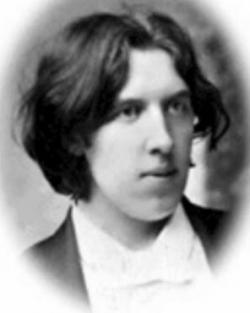Other people: together not separate
- Written by
- Charlie Hulme
- Added
- May 05, 2012

So what’s the flipside of our inertia in the face of large numbers?
We don’t want to take action unless we see large numbers of others doing so.
Take canned laughter. Can you think of anyone who’d tell you they like it? So why do the highest grossing sit-coms use it? Because experiments by Dr Robert Cialdini, (Influence: the Power of Persuasion, William Morrow, USA, 1993) have found that using canned laughter causes an audience to laugh louder and longer.
It’s the same reason advertisers always let us know that their product is the ‘fastest’ or ‘biggest’ selling; that nine out of ten people prefer their product. It’s also the reason we can walk straight past the unconscious man outside the train station without knowing if he’s drunk or had a heart attack; the person in front of us walked past, so did the person in front of him, so did the person…
Social proof

Psychologists refer to this phenomenon as ‘social proof’. Robert Cialdini says ‘…one means we use to determine what is correct is to find out whatother people think is correct.’
It looks like Oscar Wilde was right when he said ‘Most people are other people. Their thoughts are someone else’s opinions, their lives a mimicry, their passions a quotation.’
So how does this influence the way we ask?

If you want people to donate make sure they know that others are. Don’t ask them to join at the starting line, show them the finish line – show them the money.
This point was made decisively in an experiment by Professor Dean Karlan (view here online or download here) at Yale University asking donors to help raise $3000. Some were told $2000 had already been raised, others just $300.
What happened?
Showing supporters that many others were involved produced a six-fold increase in contributions and had a significant effect on both participation rates and average gift size.
Couple this learning with what we already know about offering prospects and supporters hope, and then decide which phrase gets us where we need to go…
‘We can only reach half…’
Or
‘We’ve already reached half…’
We like people like us

There’s another condition that has an even more powerful impact on social proof: similarity. We do what we see others do and the more they’re ‘like’ us the more likely we are to reflect their behaviour. Have you noticed how many television ads are using ‘average person in the street’ testimonials?
A study by Columbia University psychologists (see here) offered compelling evidence by ‘dropping’ wallets in Manhattan. Each wallet contained cash, a cheque, various information providing the name and address of its ‘owner’ and a letter. The letter was written to the wallet’s ‘owner’ from a man who had found it and was in the process of returning it. So, everyone who picked up the wallet could see that a well- intentioned individual had found it when originally lost and had every intention of returning it.
There was one variation in the letter: one was written in standard English, the other in broken English by someone identifying himself as a recently arrived foreigner. Seventy per cent returned the wallet when someone ‘like them’ had intended to do so, only 33 per cent did when the person was ‘different’.
What social proofs can you add to your story? Can you tell your donors how people where they live are getting involved? Can you tell them how many young or old, men or women are excited about being a part of your campaign?
Impact on giving?

If you want to see the impact of social proof in action, watch an experienced busker start his day’s work – the case will always contain a few shiny pound coins before he’s played a note.
Two fascinating studies in The Science of Giving (Psychology Press, USA, 2011) show the busker’s approach working just as well in our sector. John Randall and Richard Martin ran a series of experiments on donation boxes. Some boxes were empty, some displayed a few prominent notes. Their conclusion was that donation box composition tends to mimic the composition of the initial contents.
The second by Rachel Croson and Jen Shang ran a test during a public radio fundraising drive in the USA. When donors were told what the previous donor had given, giving was lifted by 29 per cent. When donors were told that the previous donation was made by someone of the same gender it was lifted by 34 per cent. And not only was there an initial uplift, but the higher giving continued in future years.
So if you want to up values make sure your other donors play a strong supporting role in your story.
There’s a reason: it’s called social proof.
There’s one more ‘proof’ that we’ll look at in the next article…
© Charlie Hulme 2012.

















